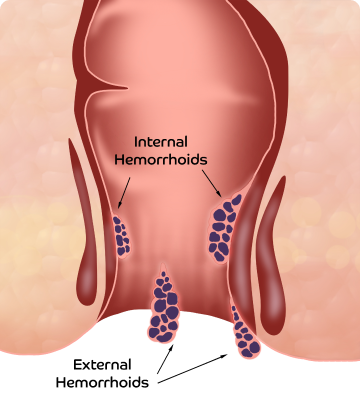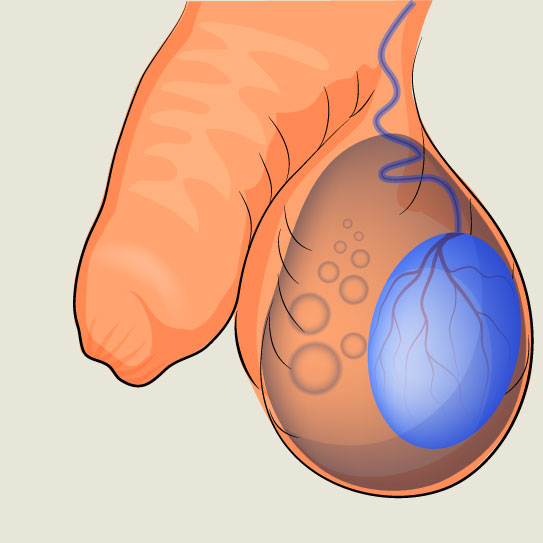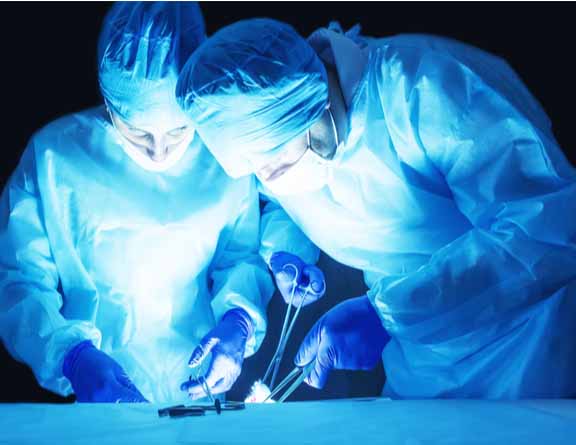Understand the Benefits of Hydrocele Repair Surgery
Hydrocelectomy is considered the best, most successful, and most effective treatment to remove hydrocele. It’s performed under local or general anesthesia. A small cut is made in the scrotum and the fluid is drained out. The surgery is completed within 30-45 minutes and the patient is fit to go home on the day of the surgery.
Here are various advantages of surgery that include:
- Takes around 45 minutes to complete
- A negligible risk for infection
- Minimal risk of recurrence
- Minimal side effects
- Does not affect fertility
- No overnight hospitalization needed after hydrocele surgery
- No long rest required at home after hydrocelectomy.
- Can take a bath the next day
- Resume office work from 1-2 day of rest
Consult the Best Doctors in Tadipatri for Proper Treatment of Hydrocele
Pristyn Care houses some of the best surgeons in Tadipatri who are highly skilled and specialize in the treatment of various urological conditions such as hydrocele, balanitis, phimosis, paraphimosis, recurrent UTIs, tight foreskin, etc. Here are some of the best doctors associated with Pristyn Care who specialize in minimally invasive procedures such as hydrocelectomy.
- Dr. Venkat, who completed his MBBS, MS from J.N. Medical College Belgaum RGUHS Karnataka/Institute of Medical Sciences, Banaras Hindu University, Varanasi and has 12 years of experience in his specialty.
- Dr. Nayar Sajeet Gopinathan, who completed his MBBS, MS from Kasturba Medical College, Manipal, MAHE University and Sri Siddhartha Medical College, Tumkur, and has 9 years of experience in his specialty.
- Dr. Gaurav Prasad, who completed his MBBS, MS from Sri Devaraj Urs Academy of Higher Educations & Research, Kolar, and World Laparoscopy Hospital
- Dr. Naveen PG, who completed his MBBS, MS from Kasturba Medical College and Grant Medical College & Sir JJ Hospital, Mumbai.
- Dr. SJ Haridarshan, who completed his MBBS, MS from Kempegowda Institute of Medical Sciences Hospital, Rajiv Gandhi University of Health Sciences, Bangalore and Rajah Muthiah Medical College, Annamalai University, Chidambaram, Tamil Nadu and has 20 years of experience in his specialty.
- Dr. Vikranth Suresh, who completed his MBBS, MS from Rajiv Gandhi University of Health Science Karnataka, Maharashtra University of Health Science, Nashik and Indian Associations of Gastrointestinal Endosurgeons.
- Dr. Mutharaju K.R., who completed his MBBS, MS from Bangalore Medical College (Bangalore), Armed Forces Medical College (Pune), and Asian Bariatrics Hospital, Ahmedabad and has 13 years of experience in his specialty.
- Dr. Sunil Alur, who completed his MBBS, MS from MR Medical College, Rajiv Gandhi University of Health Sciences, Bangalore and has 17 years of experience in his specialty.
- Dr. Sanjit Gogoi, who completed his MBBS, MS from Kathmandu University, Nepal, Rajiv Gandhi University of Health Sciences, Karnataka, India and Royal colleges of Surgeons, Edinburgh, and has 5 years of experience in his specialty.
You can consult the best surgeons who specialize in minimally invasive procedure or hydrocelectomy in Tadipatri at a Pristyn care clinic near you.
Surgeons at Pristyn Care specialize in performing successful and safe hydrocelectomy procedures. Hydrocelectomy is the most advanced effective procedure. Pristyn Care multispeciality clinics for hydrocelectomy in Tadipatri are clean, hygienic and COVID-safe. Book an appointment for the most advanced hydrocelectomy in Tadipatri .
Book an Appointment with the Best Hydrocele Surgeons in Tadipatri
Book an appointment with the best hydrocele doctors in Tadipatri by visiting the Pristyn Care website and using any of the following ways:
- Give us a call on the number given at top.
- Fill the “Book Appointment” form and submit your details.
- Download the Patient app and schedule your appointment personally.
Our medical coordinators are just a call away from helping you get the effective solution for the troubling problem of hydrocele. You can also consult our expert doctors and surgeons from the comfort of your home via online video consultation.
Different Types of Hydrocele
Hydrocele is divided into the following types:
- Primary Hydrocele- In this type, the swelling is soft and nontender. It can grow very large in size as they are often asymptomatic. However, if left unattended, it may cause atrophy of the testis due to compression or obstruction of the blood supply.
- Secondary Hydrocele- The hydrocele that occurs due to a testicular disease is called secondary hydrocele. The cause can be cancer, hernia, orchitis, or any other kind of trauma. Secondary hydrocele is most commonly associated with acute or chronic epididymo-orchitis. It often goes away when the primary lesion is treated.
- Infantile hydrocele- This type of hydrocele has the tunica and processus vaginalis distended to the inguinal ring, but there is no direct connection of the hydrocele with the peritoneal cavity. It can occur in infants as well as adults.
- Congenital Hydrocele- It is a type of hydrocele that connects with the general peritoneal cavity. Though the communication is very small, there is still a possibility that the fluid may drain into the peritoneal cavity.
- Encysted hydrocele- In this type of hydrocele, there is a smooth oval swelling very close to the spermatic cord. Due to the swelling, many patients mistake it for inguinal hernia. It is also called spermatic cord hydrocele and has no communication with the peritoneal cavity.
- Funicular hydrocele- In funicular hydrocele, the sac has a direct communication with the peritoneum connecting it with the internal inguinal ring. However, no connection exists between the sac and tunica vaginalis. It can grow very large in size due to straining.
During initial diagnosis, the doctor will identify which type of hydrocele you have and narrow down the complications associated with the procedure. Then the doctor will start the treatment right away.
What complications can arise if hydrocele is left untreated?
Severe cases of hydrocele can cause serious complications. Some of the potential complications are listed below:
- If the size of the hydrocele continues growing, it can lead to obstruction in the blood flow. And when the blood flow is not proper in the testicles, it will further give rise to testicular atrophy causing degeneration of the testicular cells.
- Another complication that can arise if hydrocele is rupture. Due to the large volume of fluid accumulation in the scrotum, the hydrocele may rupture due to minimal spontaneous trauma.
- The hydrocele may transform into a haematocele if there is bleeding in the sac. And if the haematocele is not drained, a clotted haematocele will form as a result.
- Calcification of the sac is also a potential complication of leaving hydrocele untreated.
- The hydrocele may become infected during aspiration which will increase the swelling and inflammation.
- Infected hydroceles can also cause pyocele, accumulation of pus in the scrotum.
Normally, these complications can be identified during diagnosis before the treatment method is selected. All these complications are observed for at least 24-48 hours before proceeding with the treatment.
Foods to Avoid with Hydrocele
Many people don’t know this, but the foods you eat on a regular basis can either improve the hydrocele symptoms or make them worse. Therefore, you should avoid the following foods to manage hydrocele symptoms:
- Processed Items- These foods contain excess salt and sugar and have fiber content.
- Preserved Foods- These foods are not good to eat because they have artificial preservatives and other chemicals.
- Junk Foods- It includes food items like pizza, burger, fries, etc. that are low in nutritional value. They can cause indigestion and hinder the bowel movements as well.
- Spicy and Heavy Foods- Minimize the spice intake as well if you have hydrocele. Excessive spices can upset the stomach and cause a lot of discomfort during bowel movements.
- Pickles and Caffeine- These food products are also not good for the body and should be strictly avoided.
All these food items have a direct impact on the digestion process and the individual has a hard time passing stools. This will put strain on the groin region and worsen the hydrocele symptoms.
Post Hydrocelectomy Care Plan
After you’ve had hydrocelectomy, the doctor will give you a detailed recovery plan to ensure that the wound heals quickly and you will be able to perform all activities without any difficulty.
The most common tips that are included in the post-surgery care plan are given below:
- Take complete bed rest immediately after the surgery for at least 1 day.
- Allow your body to heal at its own pace. Do not push yourself to perform an activity even if it hurts.
- Start taking small walks once you feel like you can.
- Make sure that you don’t indulge into strenuous exercises that can strain or put pressure on the stitches.
- Refrain yourself from lifting heavy weights for at least 2-4 weeks until you recover completely.
- Post-surgery, you can eat your normal diet but make sure to stay away from oily, greasy, spicy, and processed food items as they can cause constipation and also slow down the healing process.
- Incorporate fiber-rich foods in your diet and drink plenty of water to stay hydrated.
- Pay special attention to the hygiene of the scrotal region and keep it clean and dry. Wash the wound with warm water and mild soap, then pat it dry.
- In the first 2 days, the doctor will ask you to avoid bathing. So, do not take a shower until the doctor gives you permission.
- Do not take baths in hot tubs and avoid swimming as well until the wound heals completely.
- Wear scrotal support or jockstrap for at least 1-2 weeks after hydrocele surgery. It will minimize the pressure in the scrotal region and allow you to perform regular activities without pain or discomfort.
- Avoid wearing tight clothes around the waist and groin area as they can irritate the scrotal region.
- Refrain from sexual activities as well until the doctor says it’s fine.
When you follow the doctor’s instructions properly, it becomes a lot easier to resume the daily activities and get back to the regular life after hydrocelectomy.
Prevention of Hydrocele
There is no assured way to prevent hydrocele in a baby. However, in adults, hydrocele usually occurs due to some infection, inflammation, or injury that can be avoided. Here are some preventative tips that will help:
- Proper prenatal care
- Try to avoid being injured, follow the safety & protection rules like wearing athletic cups or support while playing sports.
- Practice safe sex to reduce the chances of contracting sexually transmitted infections (STIs).
- Avoid pressure activities like horse riding that can put pressure on the scrotum.
- Treat cough properly as recurrent and chronic cough creates intra abdominal pressure and puts strain on the scrotum.
- Address constipation as soon as possible.
- Appropriate care should be taken to prevent hernia and if you already have it, get proper treatment to reduce the chances of hydrocele development.
In rare cases, hydrocele may also develop due to hereditary issues, such as a side effect of Ehlers-Danlos Syndrome. Therefore, it is also important that you keep a watch on your health and take the necessary measures to prevent hydrocele.









.svg)









